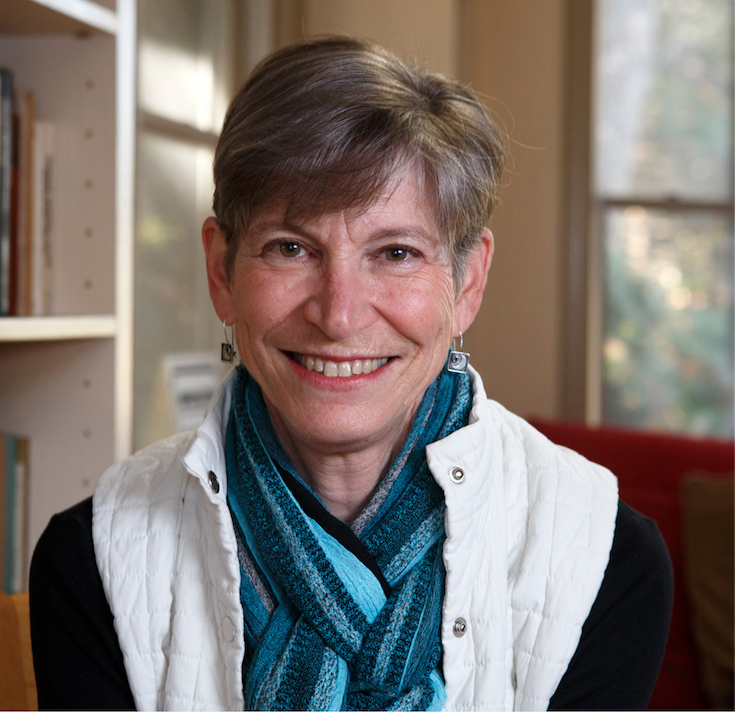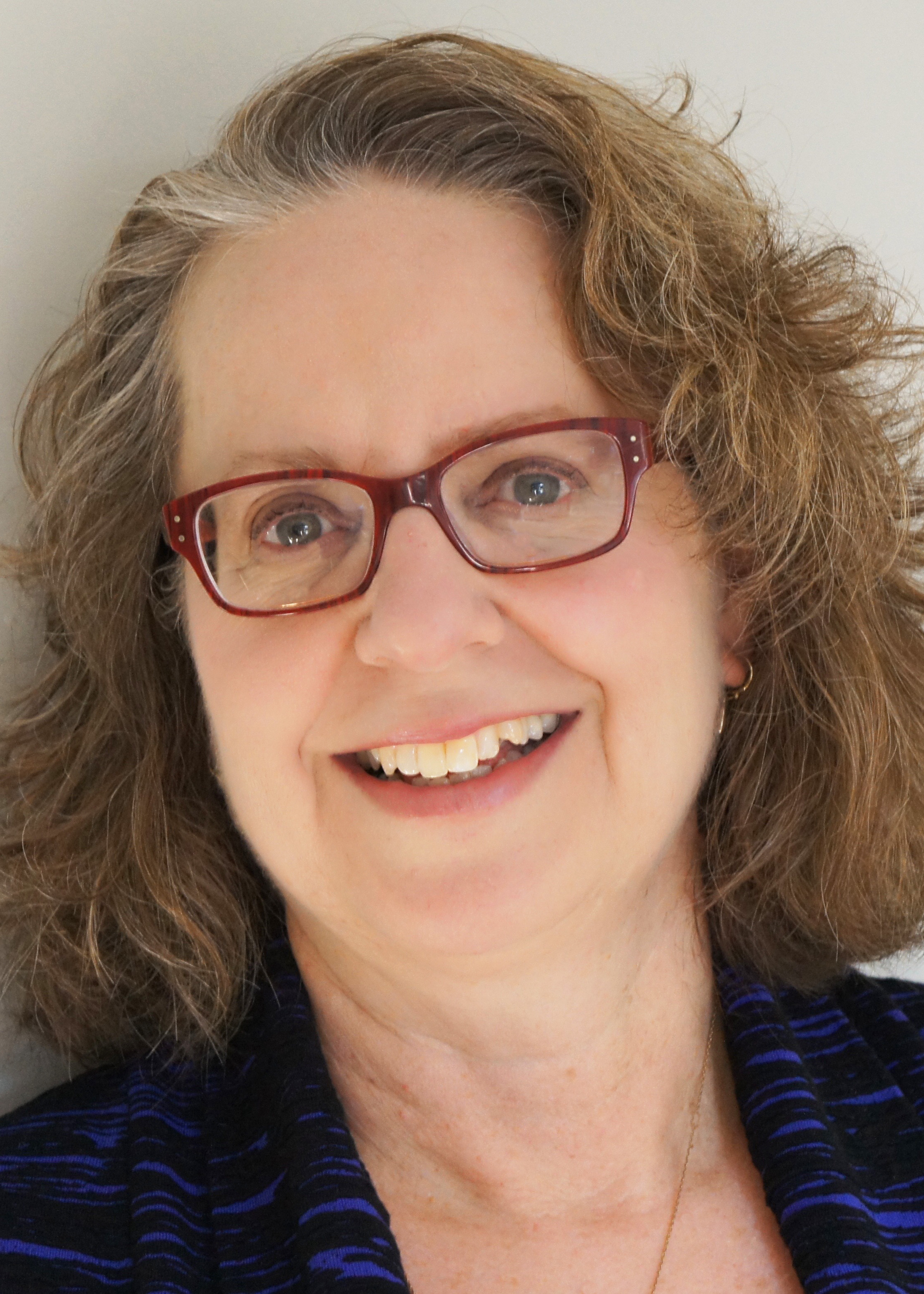Dale Russakoff spent 28 years as a reporter for The Washington Post before writing her first book, “The Prize: Who’s in Charge of America’s Schools?” Russakoff, who took a buyout in 2008, was near the end of a long recuperation from esophageal cancer surgery in 2010 when she turned on the Oprah television show and saw Facebook CEO Mark Zuckerberg announce a $100 million pledge to transform the crumbling schools of Newark, New Jersey “into a symbol of educational excellence for the whole nation.” It not only sparked her interest, but also her will to recover, because she wanted to report the story.

Dale Russakoff
She then immersed herself in Newark’s schools and politics to create a real-time account of how education reformers backed by both Democratic Mayor Cory Booker and Republican Governor Chris Christie tried but failed to turn Zuckerberg’s huge gift into real change for all students. In his New York Times review, writer Alex Kotlowitz observes, “A lesser reporter might have succumbed to the seduction of such intimate access to the rich and powerful, but Russakoff maintains a clear-eyed distance, her observations penetratingly honest and incisive to what she sees and what she hears.”
Russakoff started her journalism career at the Alabama Journal in Montgomery before moving to the Atlanta Journal-Constitution and eventually the Post, where she worked first in D.C. and then in the New York bureau. She spoke by phone from her home in Montclair, New Jersey. Following is a condensed and edited version of our conversation:
How did you decide that Mark Zuckerberg’s gift to Newark schools would make a compelling book-length narrative?
I saw an item in the Newark Star-Ledger that this big gift from Mark Zuckerberg was going to be announced on the Oprah show, so I decided to watch it. I was completely riveted. I had recently had a really huge surgery, with radiation and chemo, and it took a really long time for me to get over the surgery. I didn’t feel like myself for the longest time. It was really when I started reporting this story that I began to feel like myself again.
For about nine months before I submitted a proposal, I researched education reform, got to know the principal players in the effort and talked to people in Newark. Every interview I did in Newark, I thought, ‘This will probably be an hour interview,’ and it would go for two hours and three hours, with people talking about this particular gift and what it seemed connected to, in their experience and in the history of Newark. I called up an agent I had been talking with on and off for more than 10 years, and I said, ‘I think I might have found my book.’
It was almost like a spiritual thing. When they say you were born to write this story, I felt that way. I’d been a reporter for 30 years and hadn’t found a book and I figured I wasn’t going to write one, and now, here was a story I couldn’t not write. It was about so many things I’d been exploring all my life – race, inequality, education, cities, politics, the power of government to make things better—or not. I had a vision of what this book could be and, I thought, ‘How dare I not try it.’
How did you find a narrative voice that could rise above the very politicized debate about education in America?
Every story has its own voice and part of writing is figuring it out. If you’re living with the people in the story long enough, then you begin to hear the voice. I knew this story had to be told with a really strong feeling of history because there was so much history underlying what was going on.
Very early on it became so clear to me that the whole conversation about education nationally was so polarized that there was a huge hole in the middle of it where the children were. I was just hoping to be able to write something that was just so close to the ground and so eye-level that those kinds of arguments wouldn’t even be an issue anymore. I wanted to be present in the room when [Newark schools superintendent] Cami Anderson was having meetings with her staff. I wanted to find out from Cory Booker what he was thinking when he said we’re going to have all of these low-performing schools become high-performing schools. I wanted the most detailed, granular level about how would this work, and then I wanted to be in the classroom and see all this coming at me, see it coming at the children, at the teachers and in what ways it was affecting their experience. Were the great ambitions for changing education reaching the kids?
I thought that portraying the distance between the worlds of the people planning all these reforms—or the “transformational changes” as they called them—and the people experiencing them, would speak volumes.
How did you turn routine bureaucratic meetings and everyday classroom experiences into compelling narrative?
I spent so much more time in classrooms than I ever would have as a newspaper reporter. If you’ve been in a classroom for hundreds of days, you’ve seen so many things; it is really possible to pick those details out. You start seeing the teacher’s craft and are able to pick out details that, at first, have just gone by in a blur. I remember that scene where [teacher] Princess Williams was teaching letter sounds with a stuffed owl named Echo. I was watching her, and I started to appreciate the choreography going on: the way she had placed everything she needed right at her fingertips, so there wouldn’t be a moment when these kids had a chance to get distracted. I wouldn’t have noticed it the first day I was there.
As far as writing about the bureaucratic part of education and the jargon of reform, I had to work so hard on it, particularly on the chapter that recounts the history of reform efforts. I read as much as I could find, and I interviewed people who were part of those periods or who had written about it. When I first wrote that chapter, it was so dull and down-in-the-weeds that I just rewrote and rewrote it. It wasn’t like I wrote a first draft all the way through. I’d keep coming back to it.
What was it like to report a narrative in real-time?
At first, I thought I was going to be writing a book about a success story. They [Zuckerberg, Booker and Christie] sounded so sure of themselves. They said on Oprah that, in five years, they were going to turn around this district that was struggling. That sounded grandiose. But, with the money they had, and the political power they had, and the support they had, I thought that really dramatic things would happen. There was a moment when I did have a real panic when I wondered who would want to read about it if it didn’t succeed. It’s not news that a school district tries to get better and doesn’t.
At one point, I said to my editor, ‘I’m not going to have a hero. How do you write a book without a hero?’ She said you don’t need a hero but you need catalysts. And then I started thinking of this as a book about the big forces in play in all cities—and in cities where there is a struggle over education. I didn’t see it as the anatomy of a failure versus a success, I just thought how much more difficult this is than anybody was willing to talk about at the outset. They failed in the grand things they said they were going do when they were on Oprah. But that wasn’t realistic in the first place; that was a made-for-television promise. What I wanted to write was the real story: The charter schools expanded dramatically and they far out-perform the school district. But the district schools, which serve well over half of Newark children, including those with the highest needs, plunged into financial crisis, and their performance has actually gone down.
How did you know when the story was over?
I just kept knowing that it wasn’t over. I got the book contract in July 2011, and my editor thought I could do it in a year. It turned out they didn’t hire a schools superintendent until almost a year into it. So they said, “Okay, two years, but two years max.” At two years, it was still barely under way. I knew I didn’t have an ending, and I didn’t have an arc. I took that summer of 2013 to write a detailed chronology of everything I had—all the characters and all the events, the top-down story and the bottom-up story. I actually paid a fabulous reporter whom I know to be an adviser. He read the chronology and just helped me see that I had three quarters of the story, and I had to go back and say I needed another year. The coming year was when the schools superintendent was going to propose a complete reconfiguration of the district. However that unspooled was going to be the end of the story.


